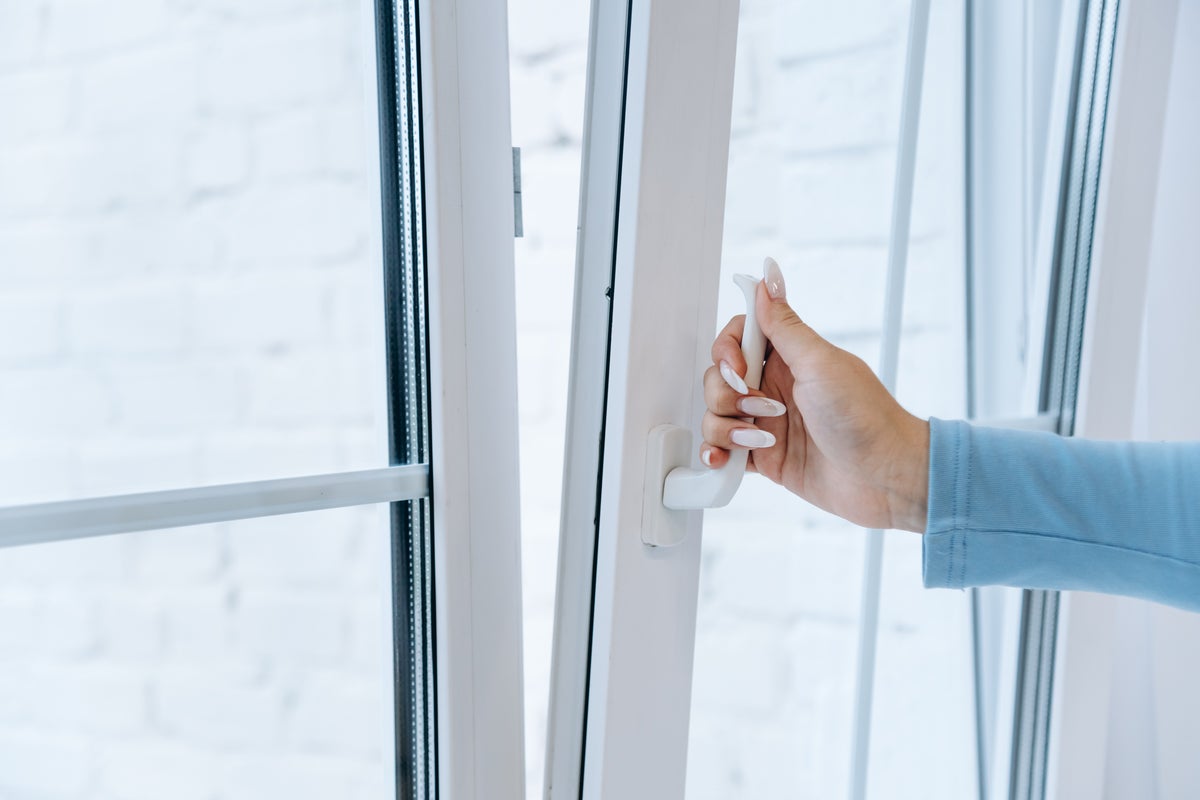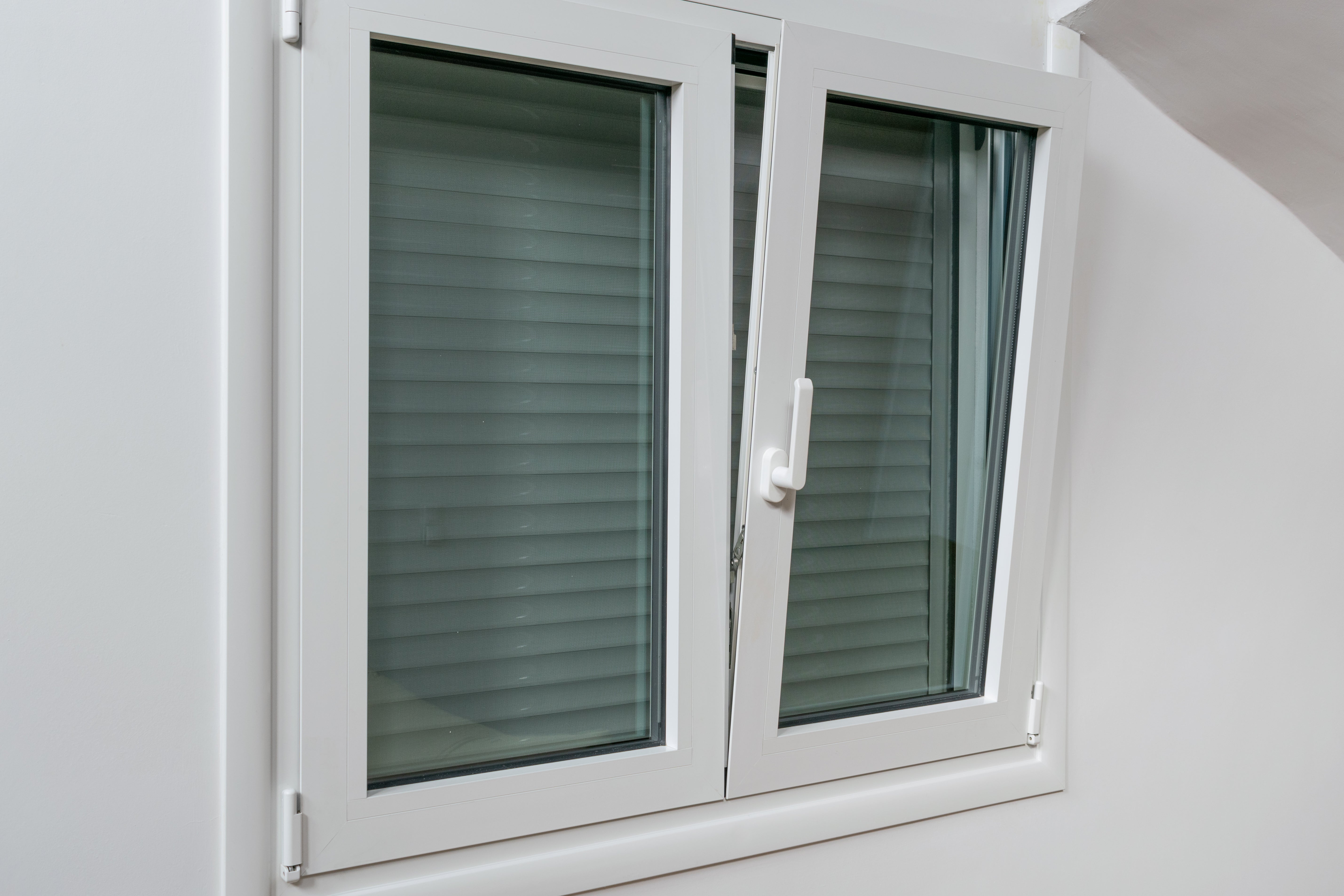
If you’re asking, “What is a tilt and turn window?” the answer lies in one of the most versatile designs on the market. Popular across Europe and now increasingly common in the UK, tilt and turn windows can open in two ways: hinged at the side like a casement window, or tilted inwards from the bottom to provide controlled ventilation.
Unlike most casement windows, tilt and turn frames are designed to open inwards, making them easy to clean and especially practical for upper-floor rooms. Combining flexibility, security and sleek modern styling, they’re a smart choice for homeowners who want both functionality and contemporary looks.
What materials are tilt and turn windows made from?
Tilt and turn windows are available in the same materials as most modern frames:
- uPVC – the most affordable and low-maintenance choice, widely used in UK homes.
- Aluminium – sleek and modern, more expensive than uPVC but with a longer lifespan.
- Timber – the premium option, offering a traditional aesthetic but requiring regular upkeep.
How much do tilt and turn windows cost?
Costs vary by material and property size. Based on The Independent’s research, fitting a typical three-bedroom home with eight tilt and turn windows will cost approximately:
- uPVC tilt and turn windows – around £5,900
- Aluminium tilt and turn windows – around £12,000
- Timber tilt and turn windows – around £18,000
While more expensive than standard casement windows, tilt and turn designs provide extra flexibility and functionality that many homeowners consider worth the investment.
How long do tilt and turn windows last?
- uPVC frames: around 20–25 years, though they may become brittle over time.
- Aluminium frames: up to 45–50 years, with minimal maintenance.
- Timber frames: up to 40 years or more with proper painting or varnishing.
Because tilt and turn mechanisms are more complex than other window types, they may need periodic servicing to ensure smooth operation.
Are tilt and turn windows energy efficient?
Yes. Like casement windows, tilt and turn frames press firmly into the seal when closed, which reduces draughts and heat loss. Many models are also available with double or triple glazing, making them well suited for energy-conscious households.
Material |
Casement cost for an average 3-bed |
Bay cost per window |
Sash cost for an average 3-bed |
Tilt and turn cost for an average 3-bed |
Bow cost per window |
uPVC |
£4,500 |
£2,250 |
£6,500 |
£5,900 |
£2,250 |
Timber |
£14,000 |
£6,700 |
£18,000 |
£18,000 |
£6,700 |
Aluminium |
£9,600 |
£4,500 |
N/A |
£12,000 |
£4,000 |
What are the advantages of tilt and turn windows?
Tilt and turn windows offer several unique benefits:
- Versatility – open inwards like a casement for maximum ventilation, or tilt from the bottom for gentle airflow.
- Safety – the tilt setting provides secure ventilation, making them ideal for homes with pets or young children.
- Convenience – because they open inwards, cleaning the outer glass is simple, even on upper floors.
- Space-saving – they don’t swing outwards, so they’re perfect for balconies or tight outdoor spaces.

Tilt and turn window pros:
- Safe for pets and children
- Several ventilation options
Tilt and turn window cons:
- More complex and therefore more expensive
- Trickier to use for the uninitiated
What to look for in a tilt and turn windows quote
Once you’ve decided to buy your windows, you’ll want to get a few quotes together. You can use our expert tool to get prices in your area.
Your quote will be influenced by several factors, including the number of windows you want, their shape and location, the materials you have chosen, and your location within the country.
Windows will cost you more in London because the area commands higher wages for tradespeople, for instance.
Firstly, you will want to go through the quote with a fine-tooth comb. What have they included? Has anything been missed out? Is scaffolding in there? Do you need scaffolding? How long have they quoted for? Is that enough or too long?
Does the quote include the finish, colour, locks and handles you asked for?
If you have opted for in-house financing, which you should probably try to avoid since it will be more expensive than other loans, is the deal exactly as the salesperson described?
If there are any discrepancies between what you asked for and what’s in the quote, raise that now and use it as leverage for a discount. If the detail is not there, ask for it.
You will also want to check exactly what the guarantee covers so you can compare it to other deals.
How to get the best price for your new tilt and turn windows?
In a word, haggle. There are hundreds of window fitters in the UK and there will be dozens in your area. If you offend one by asking for a cheaper price, so what? Be bold.
Haggling is something of a lost art in the UK, since so much is bought online or in shops where no room for negotiation is allowed.
But for big purchases like cars, homes, windows and renovations, it can save you thousands of pounds.
The key thing is to understand your own priorities and those of the fitter.







